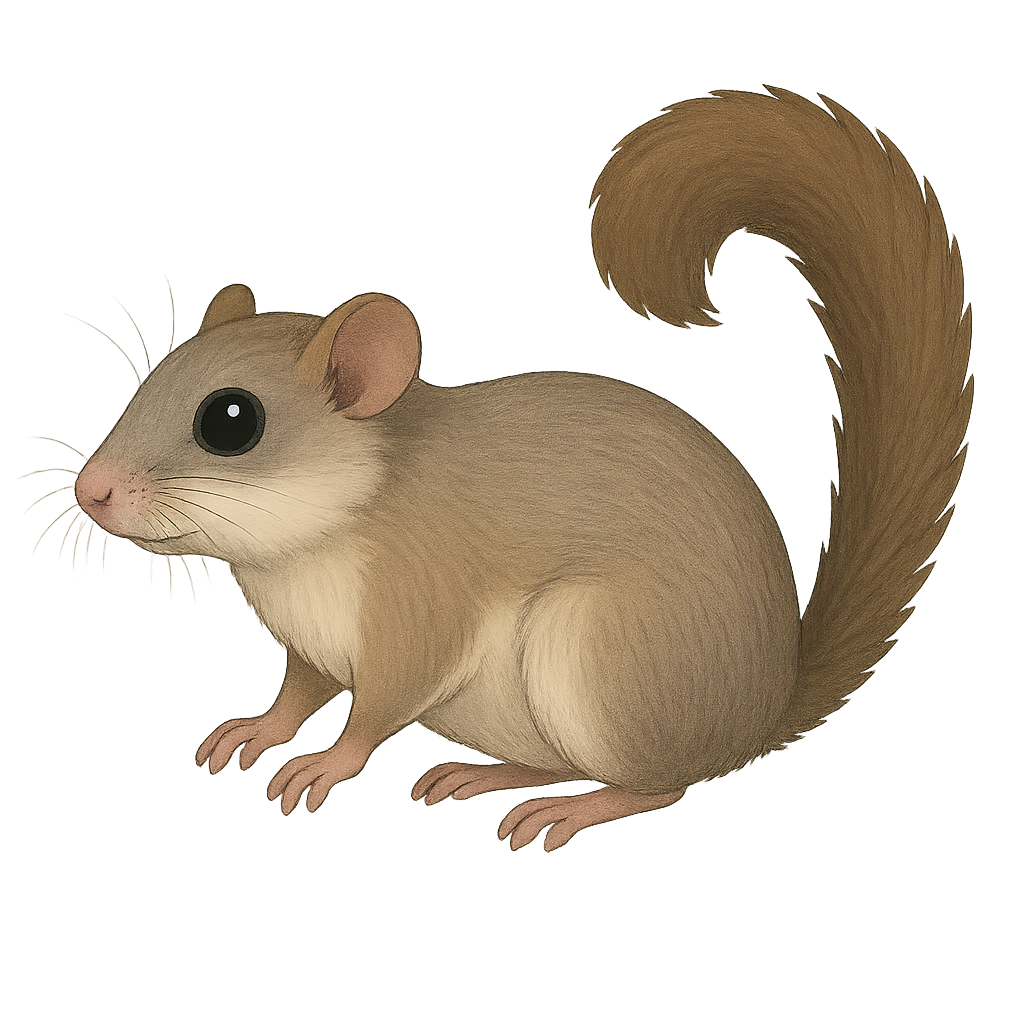Your wildlife photography guide.
Explore the brush-tailed dormouse in detail, study its behavior, prepare your shots.
Where to observe and photograph the brush-tailed dormouse in the wild
Learn where and when to spot the brush-tailed dormouse in the wild, how to identify the species based on distinctive features, and what natural environments it inhabits. The WildlifePhotographer app offers tailored photography tips that reflect the brush-tailed dormouse’s behavior, helping you capture better wildlife images. Explore the full species profile for key information including description, habitat, active periods, and approach techniques.
Brush-tailed dormouse
Scientific name: Dryomys laniger

IUCN Status: Least Concern
Family: GLIRIDAE
Group: Mammals
Sensitivity to human approach: Suspicious
Minimum approach distance: 10 m
Rut period: May to June
Gestation: 28-30 jours
Births: May to July
Habitat:
Mountain forests and woodlands of the Near East
Activity period :
Mainly active at night, generally discreet during the day.
Identification and description:
The Dormouse with a Bushy Tail is a small nocturnal rodent, easily recognizable by its large bushy tail, which is one of its distinctive features. It measures about 20 to 25 cm in length, with a tail of around 10 to 15 cm, and weighs between 50 and 150 g. Its coat is generally gray or brown, with a lighter shade on the belly, and it has large round ears and bright eyes. The Dormouse with a Bushy Tail primarily lives in forests, hedgerows, and gardens, where it feeds on fruits, seeds, nuts, as well as small creatures like insects. It is mainly active at night, taking refuge in tree holes or burrows during the day. This rodent hibernates during the winter, entering a state of torpor for several months, which allows it to survive the cold temperatures. While the species is not currently endangered, it faces threats from deforestation and the reduction of its natural habitat.
Recommended lens:
400 mm – adjust based on distance, desired framing (portrait or habitat), and approach conditions.
Photography tips:
Approach slowly and discreetly, as this small squirrel is quite shy and can quickly flee if disturbed.
Photograph early in the morning or late in the afternoon, when the light is soft and the squirrel is often more active searching for food.
Be patient: Squirrels spend a lot of time moving from tree to tree, so you may need to wait for a moment when it is more visible or in action.
Respect its natural space: Do not attempt to approach it too closely, it is better to stay at a distance to avoid stressing it.
The Dryomys laniger is a vulnerable species due to habitat loss. It is crucial to respect its natural environment and not disturb its daily activities. Make sure to follow local conservation rules to preserve this fragile species.
The WildlifePhotographer App is coming soon!
Be the first to explore the best nature spots, track rutting seasons, log your observations, and observe more wildlife.
Already 1 432 wildlife lovers subscribed worldwide

